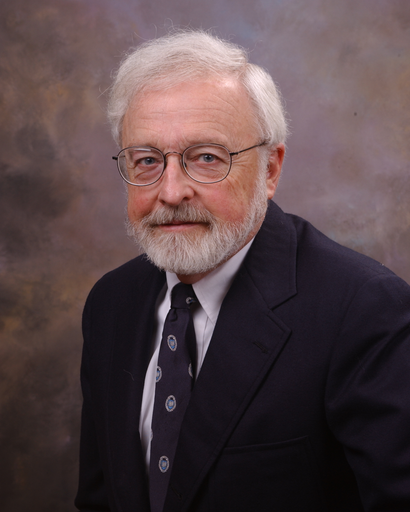John Selfridge
John Selfridge joined the faculty of the College of Architecture, Planning & Design at Kansas State University in the fall of 1969. Over his decades-long tenure, he played a pivotal role in shaping the college’s curriculum, teaching across multiple disciplines, and mentoring generations of students.
Early in his career, John taught environmental design history and design studio in the college’s foundational program, first as a two-year experience and later as a single-year curriculum. He was also deeply involved in the planning program, teaching courses such as undergraduate introductions to planning, communication modules, and specialized seminars like natural disaster planning. One of his most impactful contributions was the creation of the Community Development Workshop, which provided students with hands-on experience working with senior centers, neighborhood associations, and schools—an approach he referred to as “reality therapy.” Later in his career, he taught in the department of architecture, where his favorite course was Building-Related Health & Safety, a critical yet often overlooked topic in design education. Throughout his time at the college, John was a dedicated advocate for graduate students, serving as a major professor or committee member for dozens of students.
John’s professional journey in architecture began in high school, working in architectural and engineering offices in Wichita. His early exposure to the boom-and-bust cycles of the design industry left a lasting impression, particularly when he observed a principal architect’s taxes one year exceeding the firm’s gross income the next. He later founded PlainEnergy in the 1970s, a firm dedicated to energy-conscious design and construction, including active and passive solar residences. His projects included a U.S. Department of Energy-funded solar-assisted co-generation development for a Kansas college and editing a wind energy handbook for the state of Kansas. John also authored the proposal for the redevelopment of KSU’s historic 1932 Dairy Barn. His professional planning experience spanned local, regional, and state levels, where he served as a development officer, analyst, editor, and communications coordinator. Additionally, he worked as a consultant for ALR Architecture in New Haven, Connecticut, contributing to projects such as historic district condominiums, health clinics, and mixed-use developments.
Academically, John held an undergraduate degree in Art History from the University of Kansas. He earned a Master’s in City Planning from Yale University’s School of Architecture as a Pittsburgh Plate Glass Foundation Fellow, working with TPA, a pioneering planning consultancy in New England. He later completed a Ph.D. in Epidemiology and Public Health from Yale’s Graduate School and School of Medicine. His dissertation focused on thermal comfort in office settings, based on a large-scale research initiative at the Library of Congress and the EPA headquarters in Washington, D.C.
John was a founder, board member, and newsletter editor for the Kansas Solar Energy Society, a regional chapter of the American Solar Energy Society. Through this organization, he championed sustainable development, organized workshops, and promoted DIY solar water-heating systems. He was also an active participant in local energy and political community-action groups and served as a long-time leader in the Boy Scouts of America.
John’s service to Kansas State University was extensive, including roles on numerous departmental, college, and university committees. He was a multi-term member of the KSU Faculty Senate, frequently chairing Academic Affairs, where he spearheaded efforts to digitize and streamline course and curriculum approvals. In the 1970s, he organized the college’s first conference on computers in environmental design, demonstrating his forward-thinking approach to technology and education.
Through his contributions in teaching, research, and professional practice, John Selfridge left an enduring legacy in architecture, planning, and sustainable design.
 Associate Professor, Emeritus
Associate Professor, Emeritus